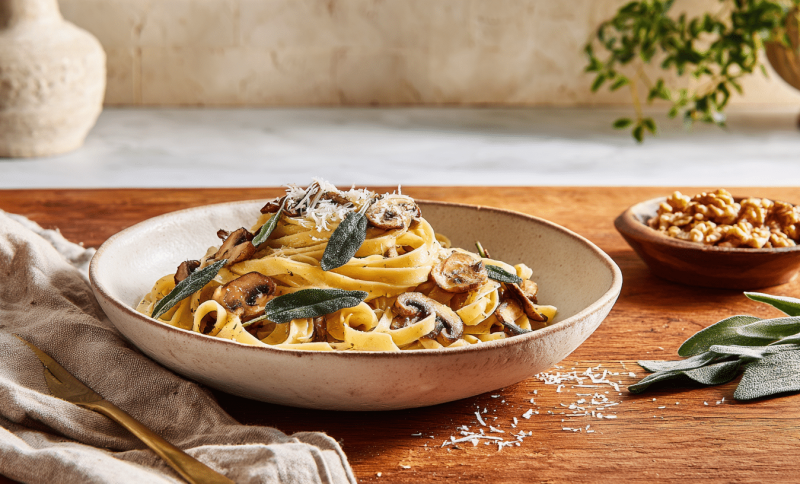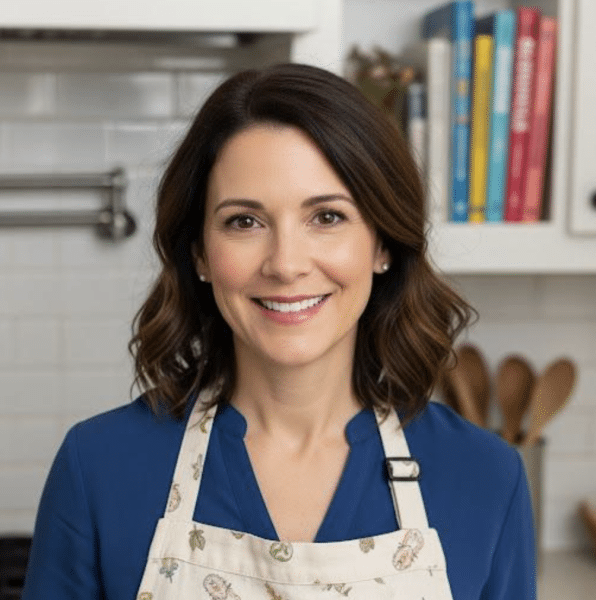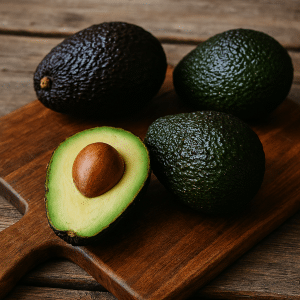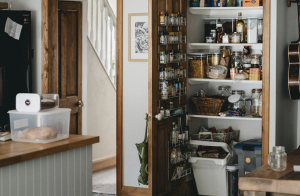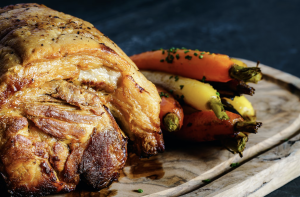Rich, nutty brown butter paired with crispy fresh sage leaves, tossed with tender pasta and finished with Parmesan.
This sage pasta delivers restaurant-quality Italian flavors in just 20 minutes.
No complicated techniques, no long ingredient lists; just a few quality ingredients that create pure magic on your plate.
The secret lies in properly browning the butter until it’s golden and fragrant, then crisping the sage leaves to release their earthy, slightly peppery oils.
For busy weeknights when you want something special, date nights at home, or impressing dinner guests, this brown butter sage sauce recipe turns simple pantry ingredients into a feast that makes everyone feel like they’re dining in a cozy Italian trattoria, asking for seconds.
Sage: From Classic Herb to Pasta Star
Sage has graced Mediterranean and Italian kitchens for centuries, traditionally playing supporting roles in roasts, stuffings, and hearty winter dishes.
This woody, earthy herb with its distinctive peppery notes was once relegated to holiday meals and rustic country cooking.
Today, sage is experiencing a culinary resurgence as chefs and home cooks rediscover its versatility in pasta dishes.
The 2024-2025 culinary trends emphasize seasonality, minimal-ingredient sauces, and the beautiful marriage of fresh herbs with quality butter, making sage pasta a perfect fit for modern cooking.
Why Sage Pasta Is Trending Now
Recent food publications and top cooking blogs are highlighting sage pasta as a standout comfort food trend.
Brown butter sage sauce has emerged as a key favorite for both home cooks and restaurant menus, offering sophisticated flavors with simple preparation.
Sage isn’t just for traditional ravioli anymore – it’s being featured across spaghetti, pappardelle, and even gluten-free pasta dishes.
Food writers praise sage’s earthy-peppery notes for pairing beautifully with rich, creamy elements, roasted squash, wild mushrooms, and even bright citrus flavors.
The trend reflects our desire for restaurant-quality meals at home using accessible ingredients that deliver maximum flavor impact.
What Is Brown Butter Sage Sauce?
Brown butter sage sauce represents classic Italian simplicity at its finest.
Butter gently browned until nutty and fragrant, combined with fresh sage leaves that become crispy and aromatic, then tossed with hot pasta.
The magic happens when butter is heated past melting, developing golden-brown specks and a rich, nutty aroma that complements the earthy sage perfectly.
This combination creates depth and complexity that feels gourmet but requires only basic cooking skills.
IngredientsFor the Pasta:
For the Brown Butter Sage Sauce:
Optional Garnish:
|
Let’s Create This Italian Classic – Step by Step!
This sage pasta comes together with simple techniques that create complex flavors. The key is timing and careful attention to the browning process.
1. Cook the Pasta
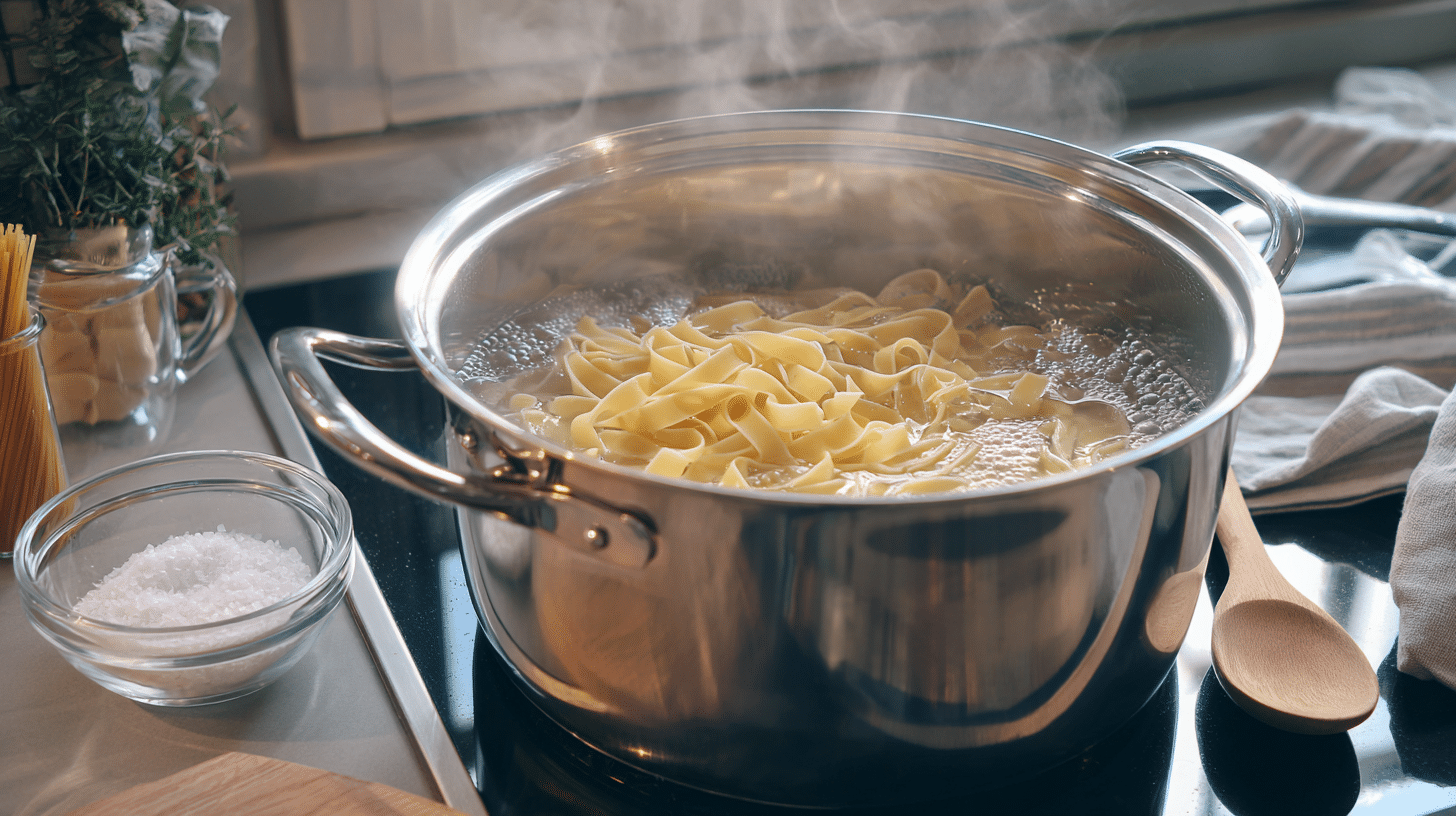
Bring a large pot of salted water to boil and cook pasta until al dente according to package directions. Reserve 1/2 cup pasta water before draining – this starchy liquid helps create the perfect sauce consistency.
Drain the pasta but don’t rinse it, as the surface starch helps the sauce adhere to every strand.
Pro Tip: Salt your pasta water generously until it tastes like seawater for properly seasoned pasta.
2. Brown the Butter & Crisp the Sage
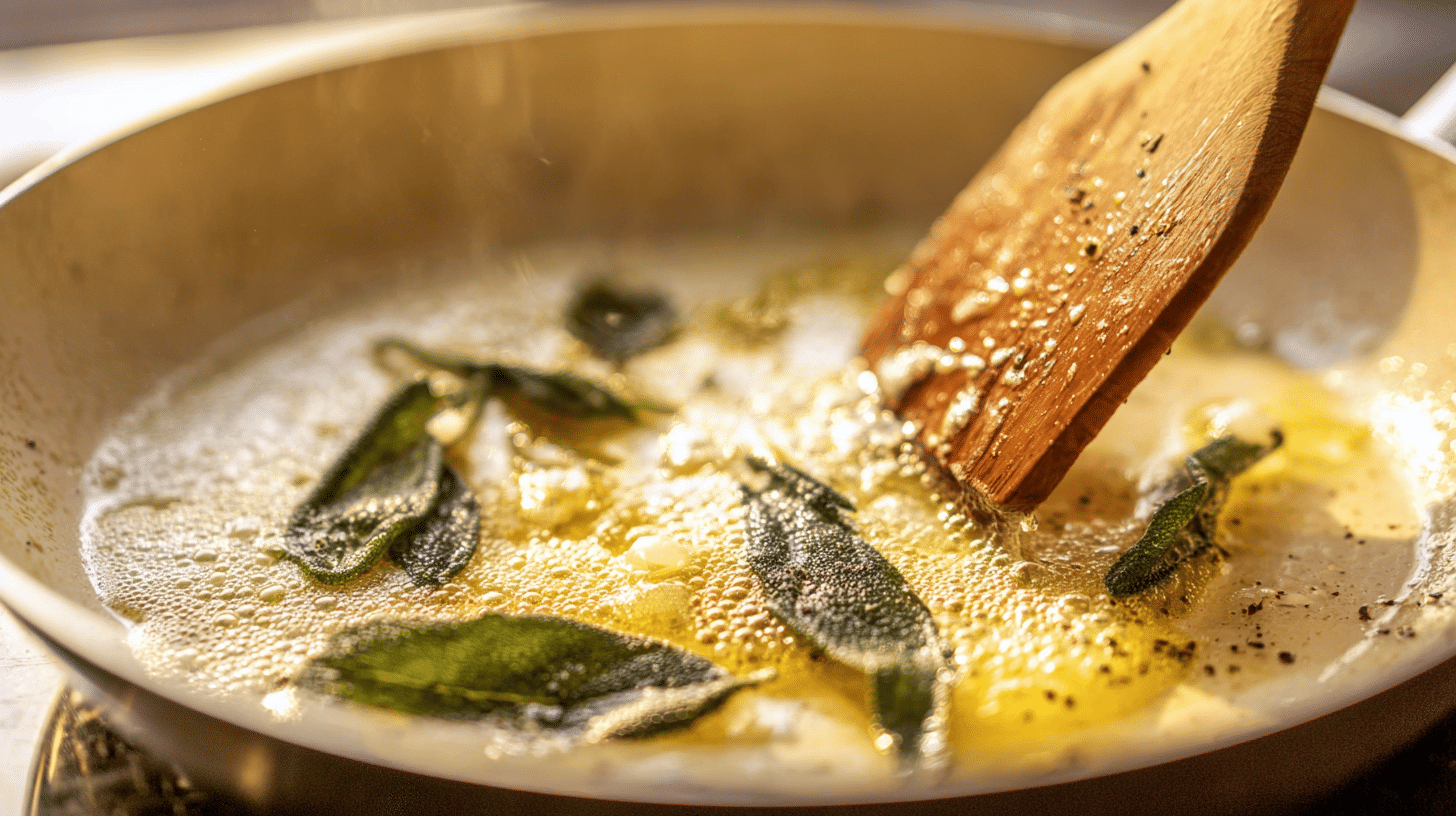
In a large, light-colored skillet, melt butter over medium heat until it starts foaming. Add sage leaves and swirl frequently for 2-3 minutes until the butter smells nutty and develops brown specks while the sage leaves turn crisp.
The butter will foam first, then settle, and finally begin to brown – this whole process takes about 3-4 minutes total.
Pro Tip: Watch carefully during this step – the difference between perfect brown butter and burned butter happens quickly.
3. Cook Mushrooms & Garlic
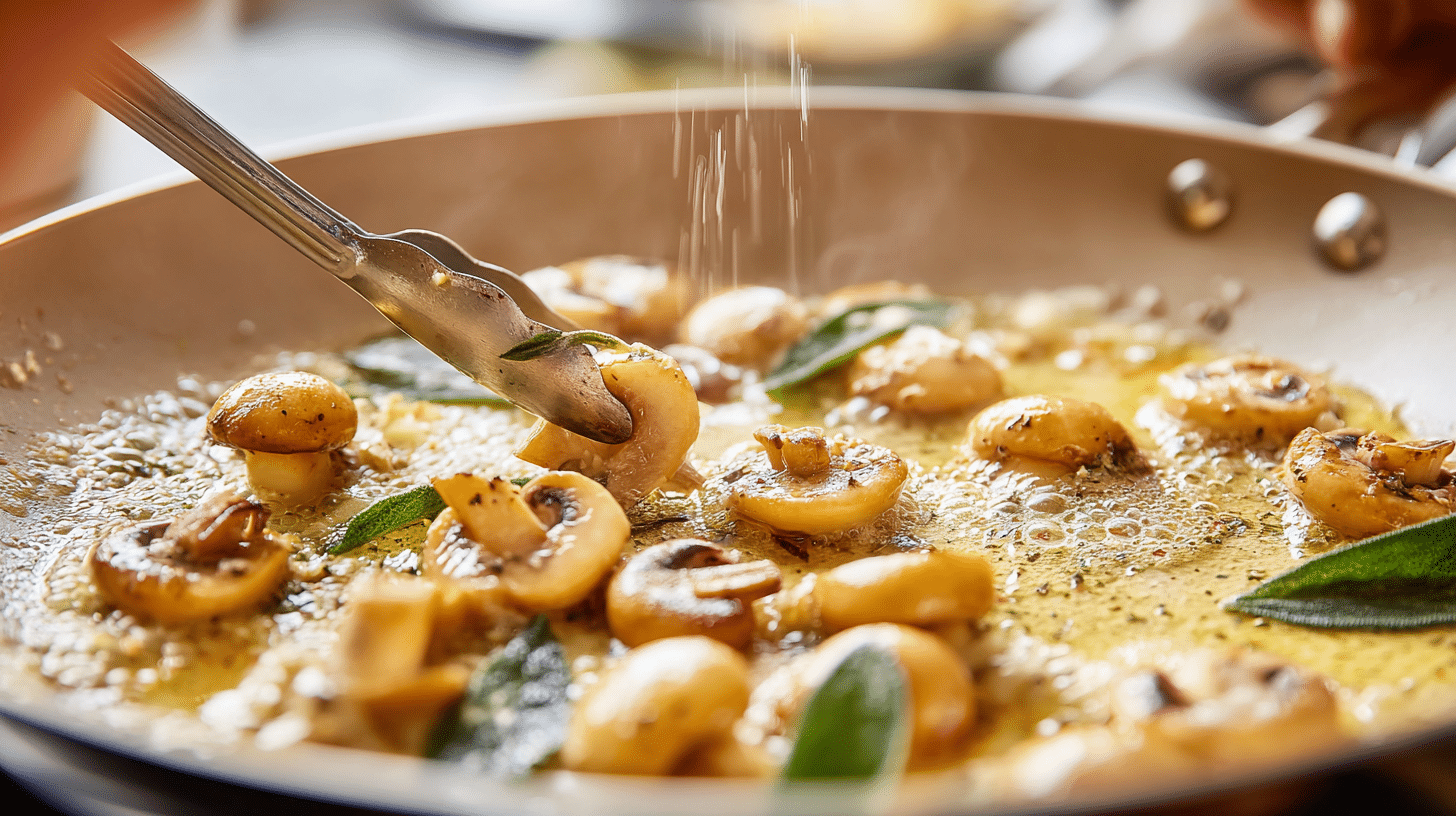
Add sliced mushrooms and garlic to the brown butter and sage mixture. Sauté for 3-4 minutes until mushrooms are tender and garlic is fragrant but not browned.
The mushrooms will release their moisture first, then start to caramelize as the liquid evaporates.
Pro Tip: Don’t overcrowd the pan – cook mushrooms in batches if necessary for proper browning.
4. Combine & Finish
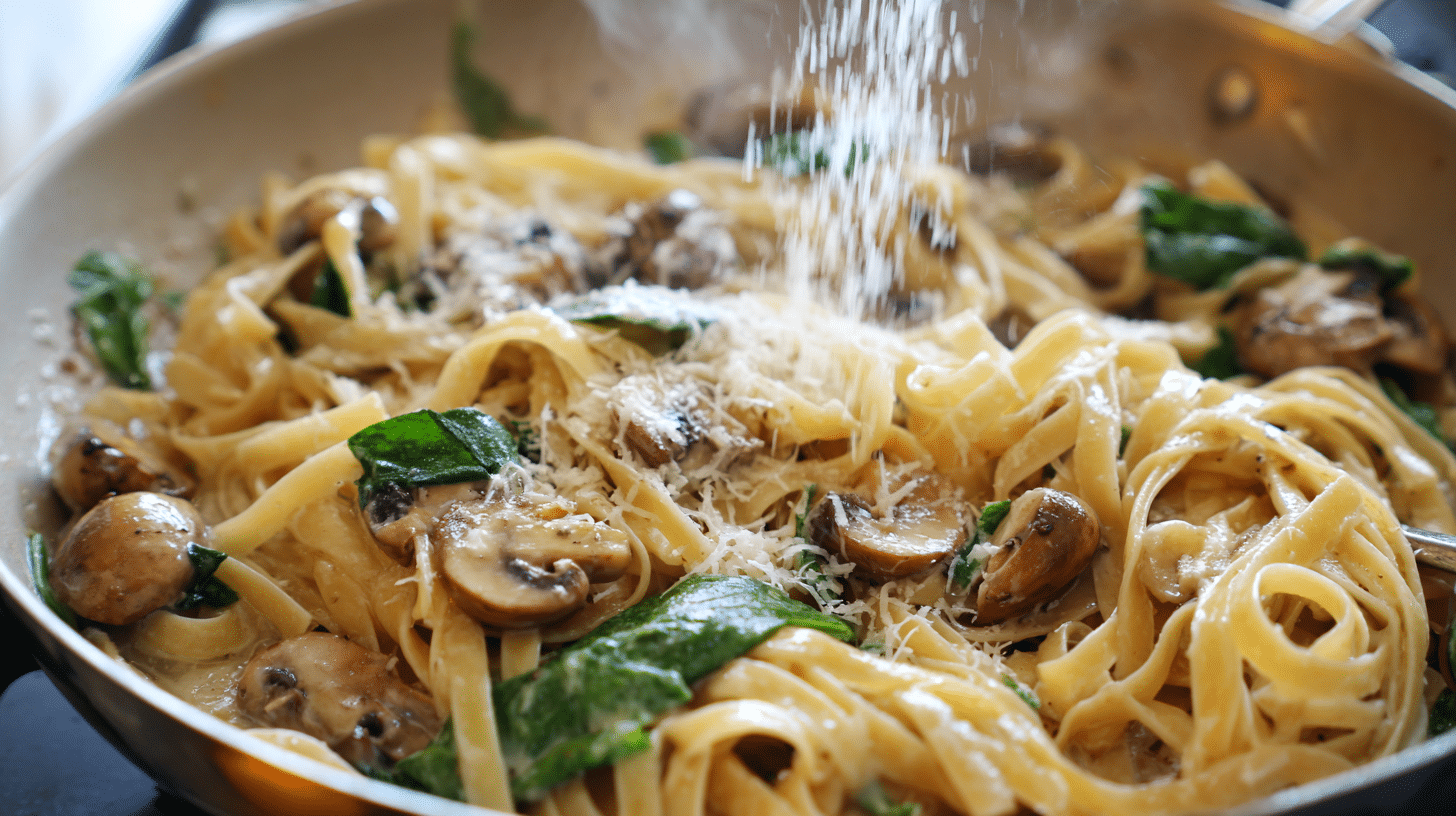
Add drained pasta and 1/4 cup reserved pasta water to the skillet and toss well to combine. Add lemon zest, juice, and Parmesan cheese, tossing again and adding more pasta water as needed for glossy consistency.
The sauce should coat the pasta evenly without being too thick or too thin – adjust with pasta water as needed.
Pro Tip: The pasta water starch helps bind everything together – add gradually until you achieve silky sauce texture.
5. Season and Serve
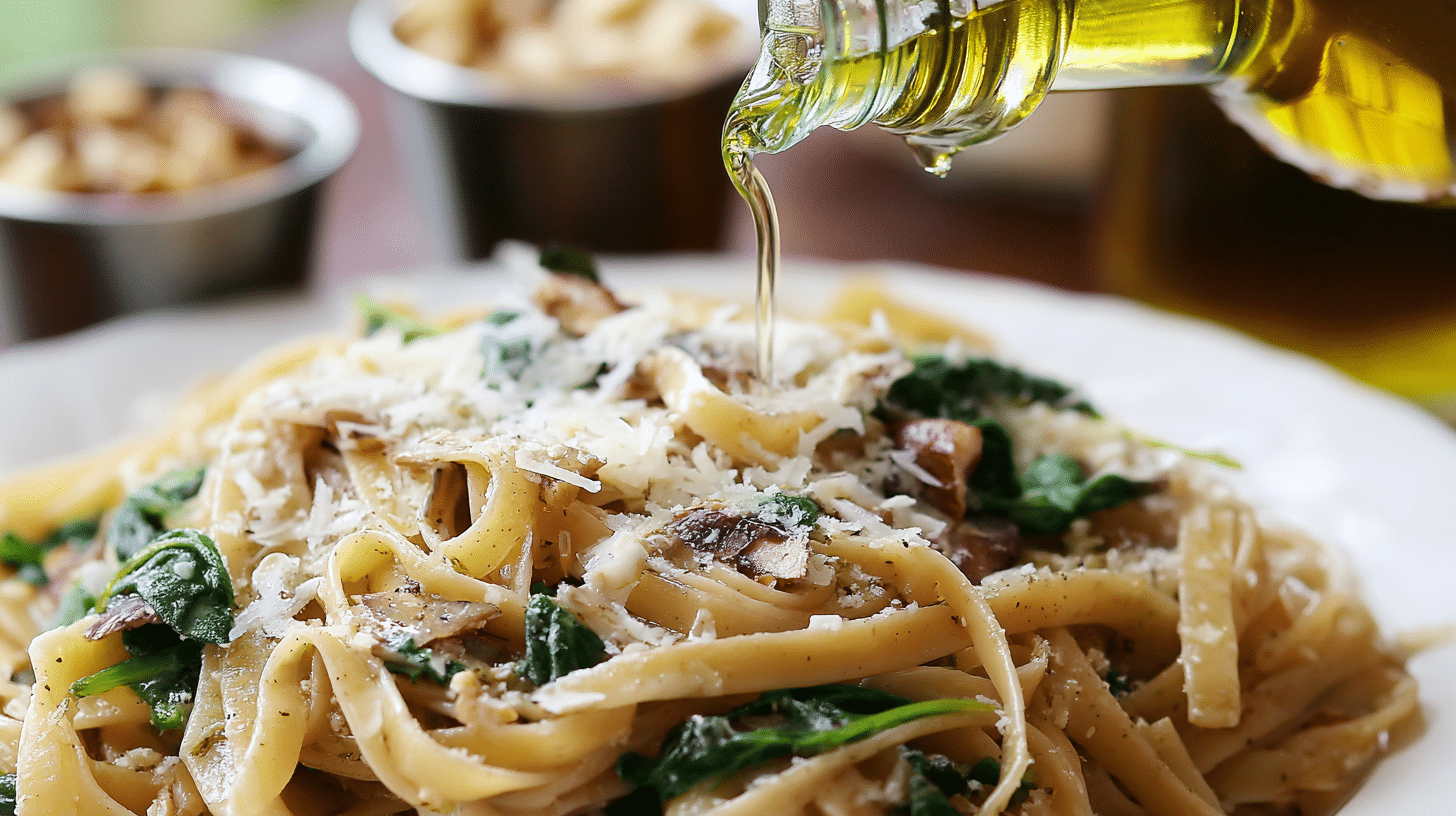
Season with salt and pepper to taste, then transfer to bowls immediately. Garnish with extra Parmesan cheese and toasted nuts if desired for added richness and crunch.
Taste and adjust seasoning one final time before plating, as the Parmesan adds saltiness to the dish.
Pro Tip: Serve immediately while hot – this dish is best enjoyed fresh from the pan when flavors are most vibrant.
Recipe Notes
| Information | Details |
|---|---|
| Prep Time | 10 minutes |
| Cook Time | 15 minutes |
| Total Time | 25 minutes |
| Category | Main Dish |
| Method | Stovetop |
| Cuisine | Italian |
| Yield | 4-6 servings |
Note: This brown butter sage sauce is best enjoyed fresh while the butter is most fragrant. Use fresh sage leaves for optimal flavor and texture.
Sage Pasta Recipe Variations: Modern Twists
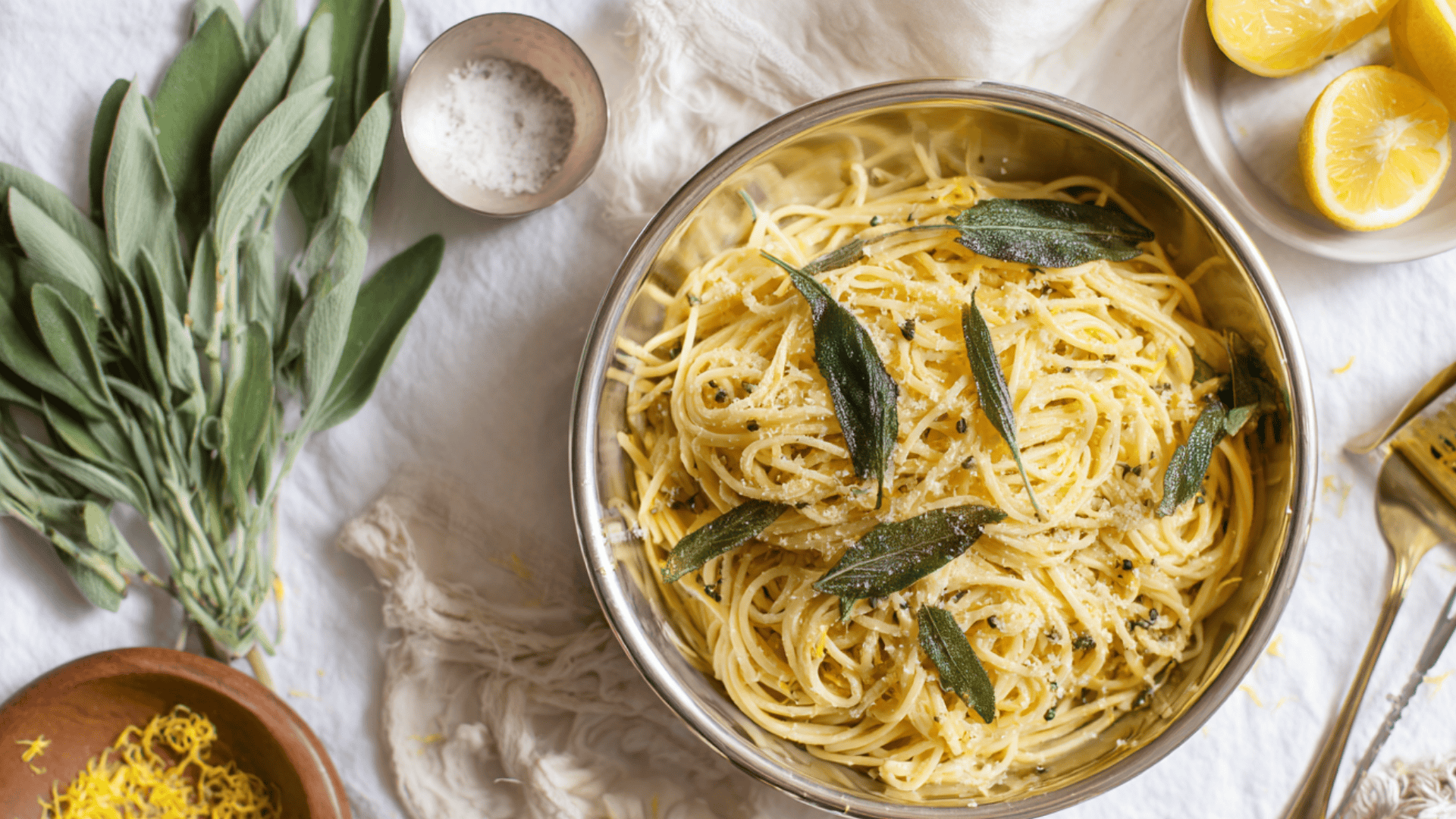
These classic variations let you customize your brown butter sage pasta while keeping the authentic Italian foundation.
Each option brings different textures and flavors to complement the earthy sage and nutty brown butter.
1. Sage Pasta with Mushrooms
Combine shiitake, cremini, or wild mushrooms with brown butter and sage for a rustic, umami-rich version that feels hearty and satisfying.
The mushrooms add meaty texture and earthy flavors that pair perfectly with the aromatic sage. Sauté the mushrooms until golden brown before adding the sage for the best results.
This variation works especially well during the fall and winter months.
2. Lemon-Sage Pasta
Add fresh lemon zest and a squeeze of juice to keep the sauce bright and aromatic, balancing the rich butter with citrus freshness.
The lemon brightens the entire dish and prevents the brown butter from feeling too heavy. Add the zest during cooking and finish with fresh lemon juice just before serving.
This lighter version is perfect for spring and summer dining.
3. Sage and Walnut Pasta
Toasted walnuts or pine nuts add delightful crunch and richness to the brown butter sage base, creating textural interest in every bite.
Toast the nuts in a dry pan until fragrant before adding them to the finished pasta. The nuts provide protein and healthy fats while complementing the earthy sage flavors beautifully.
Sprinkle extra nuts on top for added visual appeal.
4. Golden Butter and Sage Sauce
Shorten the browning time to create a “golden” butter sauce with subtler, honeyed flavors, particularly wonderful with delicate pastas like gnocchi.
This gentler approach produces a lighter sauce that doesn’t compete with delicate pasta shapes.
Watch the butter carefully and stop heating once it turns golden, but before the brown specks appear. The result is silky and rich without the deeper nutty notes of fully browned butter.
Nutrition Facts
This satisfying sage pasta provides balanced nutrition, perfect for comfort food cravings!
| Nutrition Information | Per Serving |
|---|---|
| Calories | 385 |
| Protein | 14g |
| Carbs | 58g |
| Fat | 12g |
| Fiber | 3g |
| Sodium | 320mg |
| Sugar | 4g |
Note: Values are approximate and based on 6 servings. This comfort food dish fits well into balanced meal plans!
Sage Recipes Beyond Pasta
Fresh sage’s earthy, slightly peppery flavor extends far beyond pasta dishes into many other culinary applications.
These versatile uses show how this herb can enhance both traditional and contemporary cooking styles.
1. Sage in Main Dishes
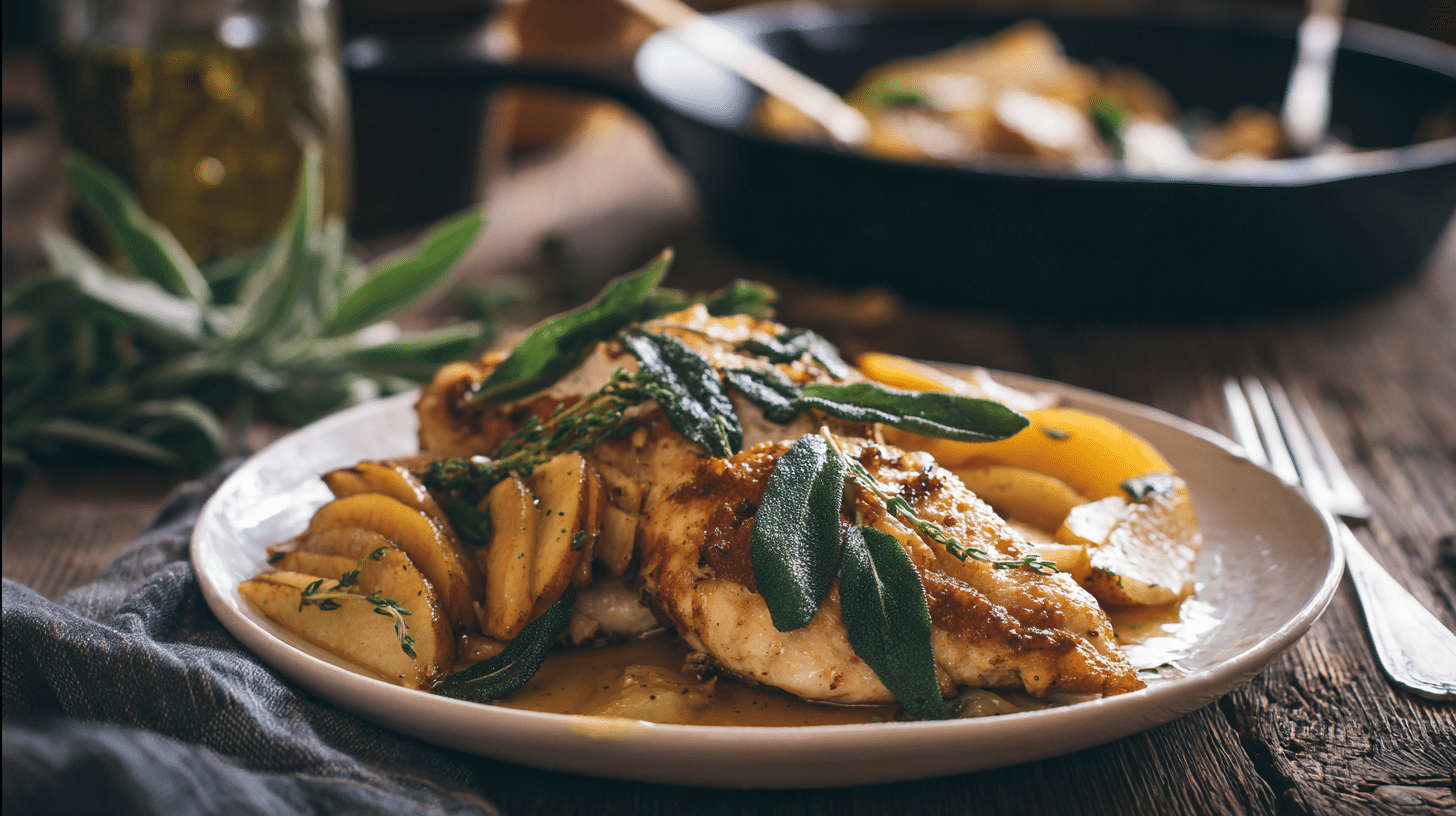
Fresh sage shines in pan-seared chicken with brown butter, apple combinations, or classic pork preparations with sage and rosemary for hearty, seasonal meals.
The herb’s strong flavor stands up well to rich meats and develops a beautiful crispy texture when fried in butter or oil.
Try sage leaves tucked under chicken skin before roasting for aromatic, flavorful results. Sage also pairs wonderfully with turkey, making it essential for holiday cooking.
2. Sage for Vegetarians
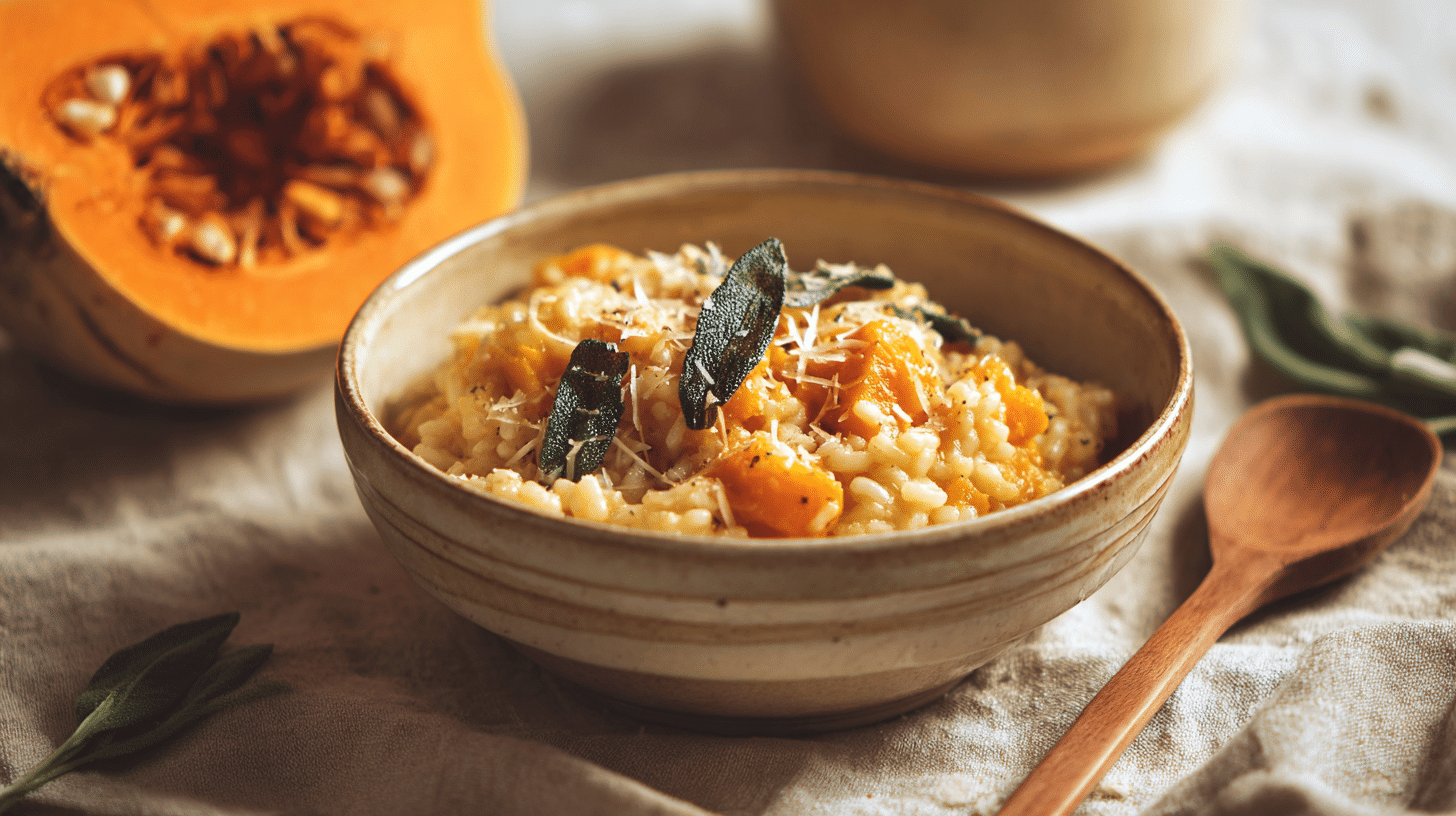
The herb pairs classically with roasted pumpkin or butternut squash puree, perfect for seasonal pasta dishes, lasagnas, or risottos that celebrate autumn flavors.
Sage’s earthy notes complement the natural sweetness of winter squashes beautifully. Fried sage leaves make an excellent garnish for creamy soups and pureed vegetables.
The combination also works well in vegetarian stuffing and grain-based dishes.
3. Sage in Contemporary Trends
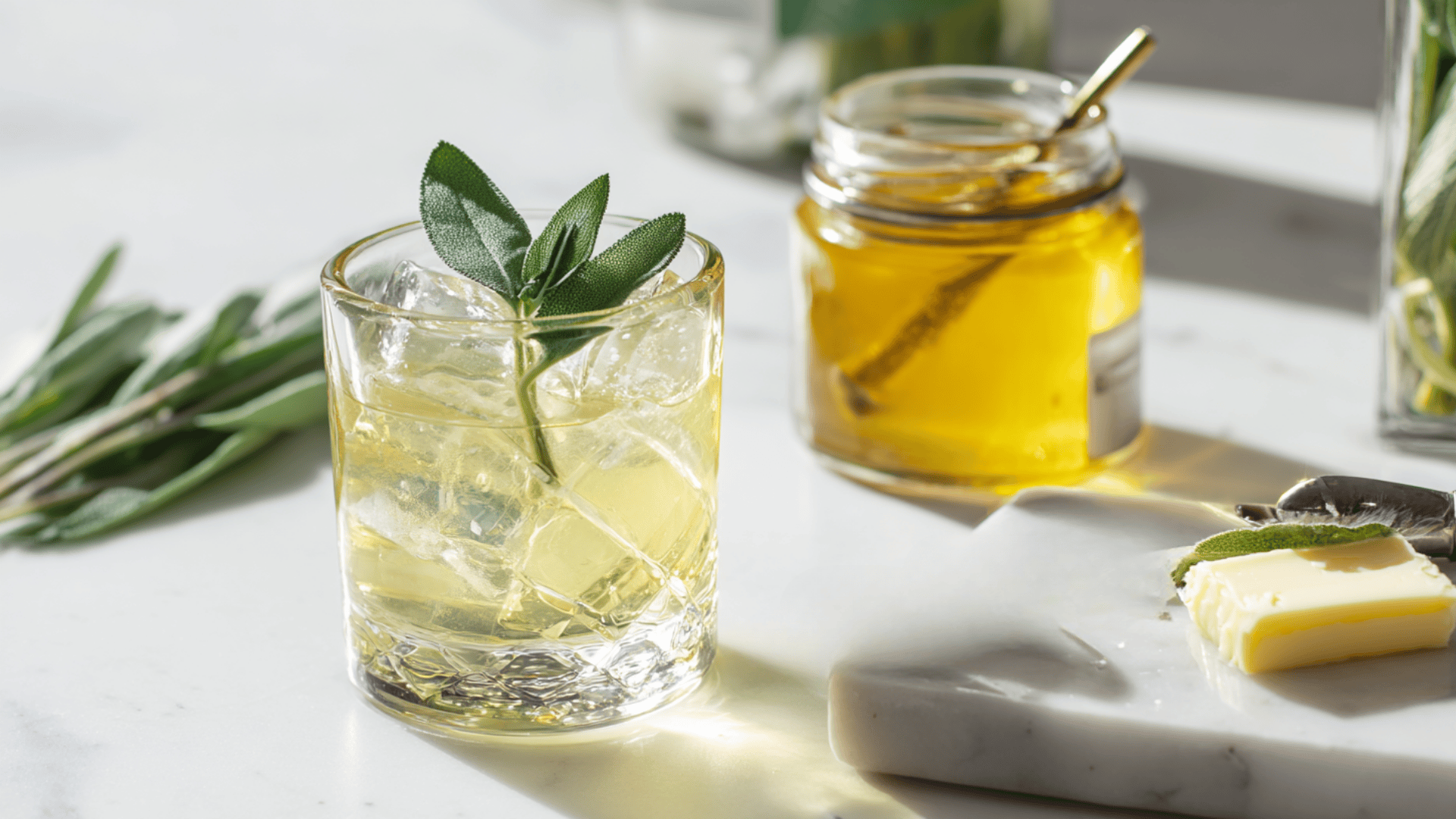
Modern kitchens are incorporating sage into herbal cocktails, artisan breads, and compound butters, showing the herb’s versatility beyond traditional applications.
Sage simple syrup adds rich flavor to gin cocktails and sparkling water drinks. Fresh sage leaves can be infused into honey or maple syrup for unique sweeteners.
Many chefs are also using sage in desserts, particularly with brown butter in cookies and cakes.
Pro Tips for the Perfect Brown Butter Sage Sauce
Use a light-colored pan rather than black or nonstick cookware to monitor the browning process accurately. The butter should turn golden with visible brown specks while smelling distinctly nutty.
Swirl the pan continuously and watch carefully to avoid burning – sage leaves should turn crisp and fragrant, not soggy or charred.
Add cooked pasta and a splash of pasta water only after removing the pan from the heat to achieve the best texture and prevent the sauce from breaking.
Embracing the Sage Pasta Trend
Sage is shining in contemporary kitchens as a hero ingredient, especially when paired with brown butter in simple, classic sauces.
For sticking to classic Italian traditions or incorporating earthy mushrooms, nuts, or citrus, sage pasta offers endless adaptability while staying true to its roots.
The trend reflects our desire for comfort food that feels both familiar and special, perfect for any occasion, from casual weeknight dinners to impressive entertaining.
Join the culinary movement and make this classic technique part of your regular cooking routine.
Add a comment below sharing which variation became your favorite and how this brown butter sage sauce recipe changed your approach to simple, flavorful pasta dishes!








